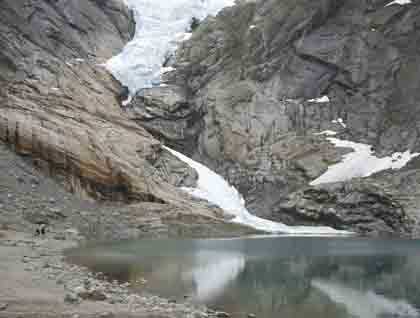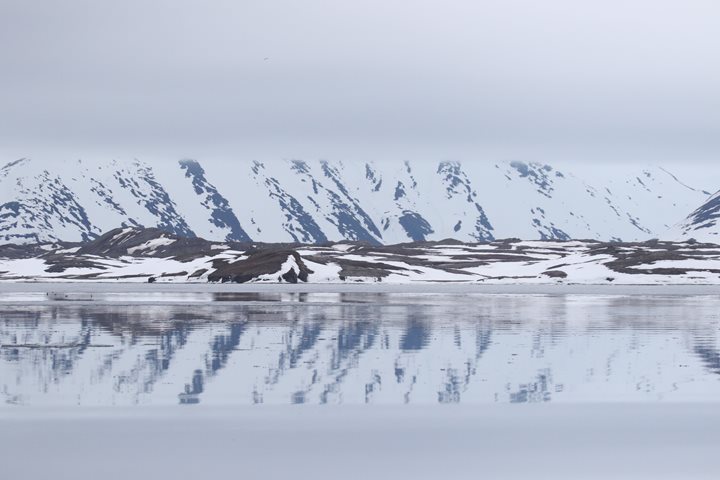In the early hours of this morning National Geographic Explorer entered Nordfjord, an ice-hewn inlet on the western coast of Norway. With an average depth of 1,800 feet and a length of 65 miles this is a most impressive glacial feature. Shortly before 6 a.m. the ship came alongside at the picturesque village of Olden where, following breakfast, we boarded motor coaches and were driven to explore the dramatic landscape in the environs of the Briksdal Glacier.
This is an ancient landscape composed of rocks estimated to be 420 million years old. The valleys here were sculpted by the erosive power of glacial ice during the last Ice Age, the lower slopes of which are blanketed by a layer of fertile soil, which has supported human settlement here for millennia. Prehistoric hunter-gatherers moved amongst these valleys and the coastal fringe seeking food and shelter after the retreat of the main ice sheets. Thousands of years later, Neolithic farmers created openings in its woodland cover and established a permanent foothold. Small sized farms still pepper the verdant slopes of the main valley in a settlement pattern probably not dissimilar to that of their ancient counterparts.
Narrow horizontal bands of cloud hung high above the floor of the main valley. Here a lake, several miles long and occupying a trough cut by the gauging action of ice, reflected mirror-like, the surrounding snow encrusted peaks and conifer and birch trees nestled along its margin. The fresh air was resinous and filled with a cacophony of bird song which resonated along the valley.
When we arrived at the trailhead and visitor facilities we began our two-and-a-half mile hike to where the Briksdal Glacier, a tributary arm of Europe’s largest mainland glacier—Jostedalsbreen—cascades down from the main ice field. This place has been, and indeed is still being, sculpted by water, in both its frozen and free-flowing forms. During the last Ice Age, over hundreds of thousands of years, a massive river of solid, blue glacier ice slowly insinuated itself into an erstwhile river valley and rasped out the present ‘U’ shaped conduit. Meltwater streams are presently crafting gorges and potholes along their meanderings. This valley, like its neighbouring ones, once harboured farming homesteads and numerous coppiced trees attest to earlier traditional fodder management, which utilized the foliage of trees as animal food. Everywhere bare rock has been enfolded by a deep, verdant carpet of mosses, birch trees were laden with a fresh crop of leaves, while blackbirds and redwings vied for attention with their callings.
Briksdal Glacier has retreated dramatically since the latter part of the 18th century. A series of signposts at points along the trail indicate its former extent and successive stages of retreat. The meltwater lake below it now reflects a much diminished ‘river of ice,’ one modified element in an ever changing landscape.
With promises of well-deserved mid-morning refreshments, in the guise of tea, coffee, and traditional pastries, we began to meander our way back down the trail, in the company of the babbling river. And at journey’s end—smile-rich countenances, eclectic conversation, and second helpings!







